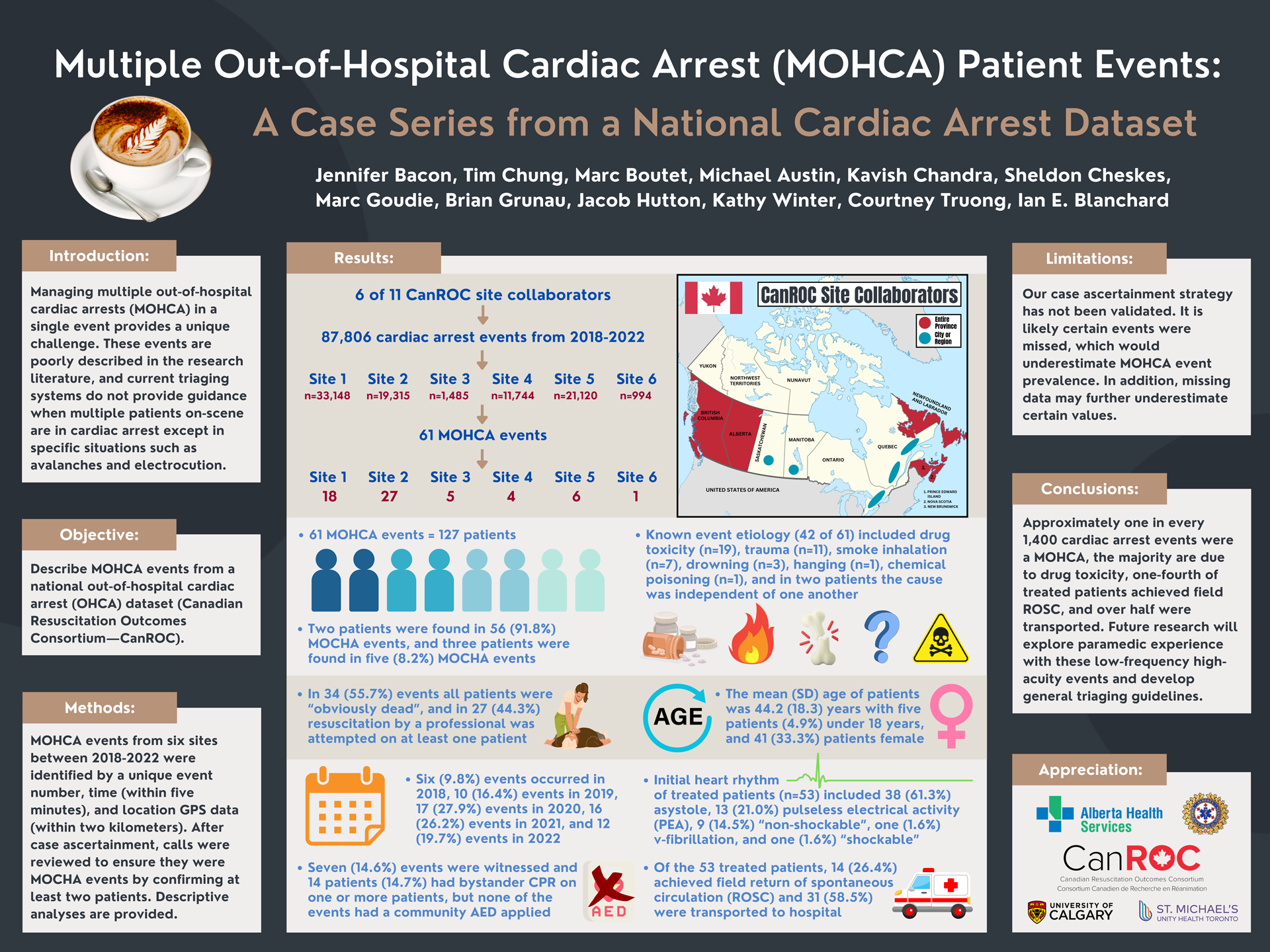 |
|
Multiple Out-of-Hospital Cardiac Arrest Patient Events: A Case Series from a National Cardiac Arrest Dataset Jennifer Bacon, Tim Chung, Marc Boutet, Michael Austin, Kavish Chandra, Sheldon Cheskes, Marc Goudie, Brian Grunau, Jacob Hutton, Kathy Winter, Courtney Truong, Ian E. Blanchard Introduction: Managing multiple out-of-hospital cardiac arrests (MOHCA) in a single event provides a unique challenge. These events are poorly described in the research literature, and current triaging systems do not provide guidance when multiple patients on-scene are in cardiac arrest except in specific situations such as avalanches and electrocution. Objective: Describe MOHCA events from a national out-of-hospital cardiac arrest (OHCA) dataset (Canadian Resuscitation Outcomes Consortium—CanROC). Methods: MOHCA events from six Canadian sites between 2018-2022 were identified by a unique event number, time (within five minutes), and location GPS data (within two kilometers). After case ascertainment, calls were reviewed to ensure they were MOCHA events by confirming at least two patients. Descriptive analyses are provided. Results: A total of 87,806 OHCA events yielded 61 MOHCA events and a total of 127 patients. There were two patients in 56 (91.8%) events, and three patients in five (8.2%) events. In 34(55.7%) events all patients were “obviously dead”, and in 27(44.3%) resuscitation by a professional was attempted on at least one patient. Six events occurred in 2018, 10 events in 2019, 17 events in 2020, 16 events in 2021, and 12 events in 2022. Seven events(14.6%) were witnessed and 14 patients(14.7%) had bystander CPR on one or more patients, but none of the events had a community AED applied. Known event etiology(42 of 61) included drug toxicity (n=19), trauma (n=11), smoke inhalation (n=7), drowning (n=3), hanging (n=1), and chemical poisoning (n=1). The mean(SD) age of patients was 44.2(18.3) years with five patients (4.9%) under 18 years, and 41 (33.3%) patients female. Initial heart rhythm of treated patients included 38 (61.3%) asystole, 13 (21.0%) pulseless electrical activity, 9 (14.5%) “non-shockable”, one (1.6%) v-fibrillation, and one (1.6%) “shockable”. Of the 53 treated patients, 14(26.4%) achieved field return of spontaneous circulation (ROSC) and 31 (58.5%) were transported to hospital. Conclusions: Approximately one in every 1,400 cardiac arrest events were a MOHCA, the majority are due to drug toxicity, one-fourth of treated patients achieved field ROSC, and over half were transported. Future research will explore paramedic experience with these low-frequency high-acuity events and develop general triaging guidelines. |
Jennifer Bacon is an experienced EMS professional with 18 years in the field. She began her career in Peace River, Alberta, in 2007 and moved to Calgary in 2015 to gain urban care experience. In 2018, she shifted her focus to EMS science and research.


